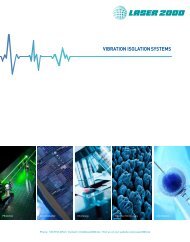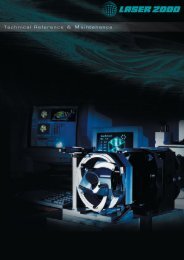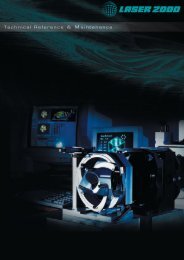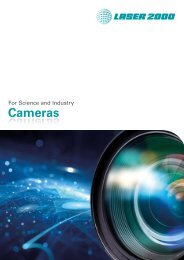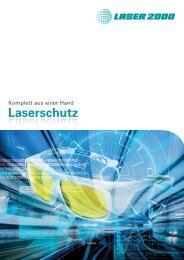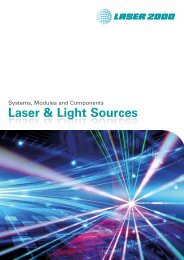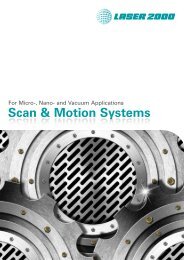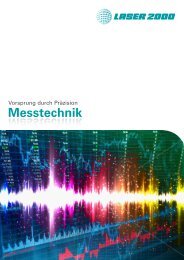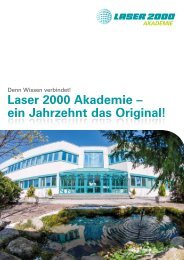Semrock Master Catalog 2018
Semrock Master Catalog 2018
Semrock Master Catalog 2018
Create successful ePaper yourself
Turn your PDF publications into a flip-book with our unique Google optimized e-Paper software.
Fluorophores<br />
Single-band<br />
Sets<br />
BrightLine ® FISH & Dense Multiplexing Information<br />
APPLICATION NOTE<br />
Crosstalk in FISH and Densely Multiplexed Imaging<br />
When using multiple fluorophores with densely spaced spectra, rapid and accurate results rely on the ability to readily<br />
distinguish the fluorescence labels from one another. This dense multiplexing of images is particularly important when doing<br />
Fluorescence in Situ Hybridization (FISH) measurements. Thus, it is critical to minimize crosstalk, or the signal from an undesired<br />
fluorophore relative to that of a desired fluorophore. The table below quantifies crosstalk values for neighboring fluorophores<br />
when using a given BrightLine FISH filter set. Values are determined from the overlap of typical, normalized fluorophore<br />
spectra, the filter design spectra, and an intense metal halide lamp.<br />
Multiband<br />
Sets<br />
Cubes Laser<br />
Sets<br />
NLO<br />
Filters<br />
Fluorophore<br />
Relative Fluorophore Contributions for Each Filter Set<br />
Filter Set DAPI SpAqua SpGreen SpGold SpOrange SpRed Cy5 / FRed Cy5.5 Cy7<br />
DAPI 100% 30% 0%<br />
SpAqua 0% 100% 1% 0%<br />
SpGreen 0% 0% 100% 3% 0%<br />
SpGold 0% 2% 100% 49% 1%<br />
SpOrange 0% 36% 100% 11% 0%<br />
SpRed 0% 15% 100% 1% 0%<br />
Cy5 / FRed 0% 12% 100% 53% 1%<br />
Cy5.5 0% 53% 100% 6%<br />
Cy7 0% 12% 100%<br />
Grey combinations are not recommended<br />
As an example, when imaging a sample labeled with the SpectrumGreen, SpectrumGold, and SpectrumRed fluorophores<br />
using the SpectrumGold filter set, the undesired SpectrumGreen signal will be less than 2% of the desired SpectrumGold<br />
signal, and the SpectrumRed signal will be less than 1%.<br />
Amazing Spectra that Minimize Crosstalk<br />
These BrightLine filter sets are meticulously optimized to maximize brightness for popular fluorophores, while simultaneously<br />
minimizing unnecessary background as well as crosstalk with adjacent fluorophores. The graph below shows an example of the<br />
filter spectra for the SpectrumRed filter set (blue, green, and red solid lines), as well as the absorption and emission curves for<br />
SpectrumGold, SpectrumRed, and Cy5 (left to right). Crosstalk is kept to only a few percent or less, as quantified in the<br />
table above.<br />
Individual<br />
Filters<br />
Dichroic<br />
Beamsplitters<br />
Tunable<br />
Filters<br />
Transmission (%)<br />
100<br />
90<br />
80<br />
70<br />
60<br />
50<br />
40<br />
30<br />
20<br />
10<br />
Spectrum<br />
Gold<br />
Spectrum<br />
Red<br />
Cy5<br />
Spectrum Red<br />
Filter Set<br />
Exciter<br />
Dichroic<br />
Emitter<br />
0<br />
500 525 550 575 600 625 650 675 700 725<br />
Wavelength (nm)<br />
750<br />
More<br />
18



